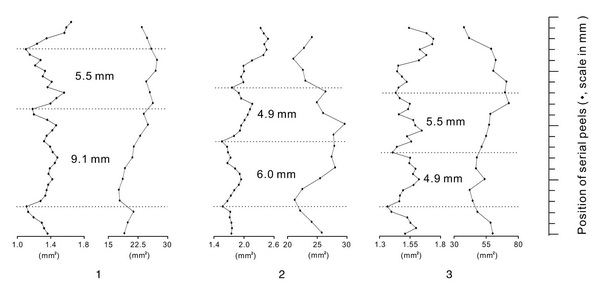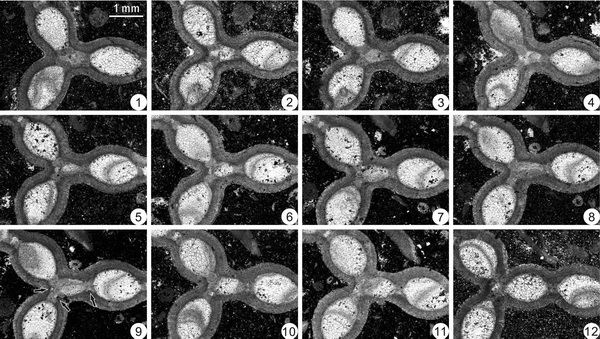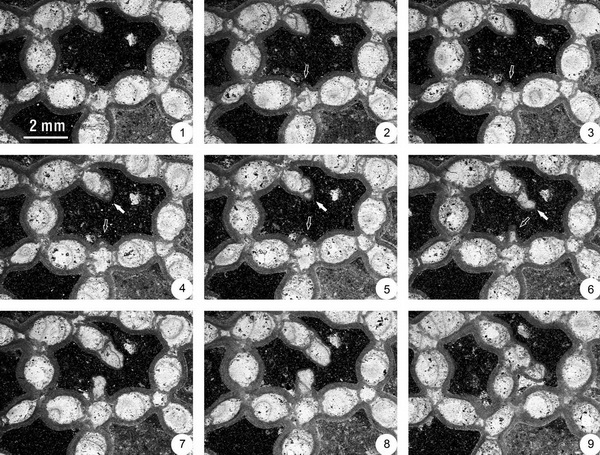Based on multivariate morphometric analysis, Halysites catenularius is identified from the Rumba Formation (Telychian) and Jaagarahu Formation (Sheinwoodian) of Estonia; H. priscus is confirmed as a junior synonym. Halysites catenularius, H. junior and H. senior are shown to be closely related; H. catenularius is morphologically intermediate.
Cyclomorphism in H. catenularius, recorded by fluctuations of corallite tabularial area, indicates an average annual growth rate of 6.0 mm, which is typical for halysitids.
Tubules in H. catenularius, generated from small intramural openings between adjacent corallites, were involved in two types of interstitial increase.
The intramural openings, three types of lateral increase, temporary agglutinated patches of corallites, and axial increase documented in H. catenularius resemble features in some species of Catenipora.
These similarities are consistent with the interpretation that Halysites evolved from Catenipora. Evaluation of the possibility that both genera are polyphyletic will require further detailed analysis of additional species.
Reference: Liang, K., Elias, R.J., Lee, D.-J. 2018. Morphometrics, growth characteristics and phylogenetic implications of Halysites catenularius (Tabulata, Silurian, Estonia).Journal of Paleontology. https://doi.org/10.1017/jpa.2018.73

Growth cycles detected from fluctuations of corallite tabularial area base on serial peels

A new offset developed by interstitial increase and formation of new tubules (arrows) in Halysites catenularius

New offsets developed by lateral increase (arrows) in Halysites catenularius

